Strategic Pricing: Your Most Powerful Profit Optimizer
“We are leaving money on the table!”
Like many of you, I experienced that sinking feeling numerous times when making pricing decisions. We tend to approach pricing on a reactive basis, and only consider costs and changes in the market or our competitive environment. It’s not necessarily a recipe for disaster, but we just grossly under-estimate the power of strategic pricing.
There’s ample literature on the Web about it, and I won’t reinvent the wheel, but here are three concepts that can optimize your profit. We’ll start by reviewing where most pricing strategies are falling short and then cover the trinity of strategic pricing.
Why do so many pricing strategies fail?
Because they have severe limitations! Here are a few examples:
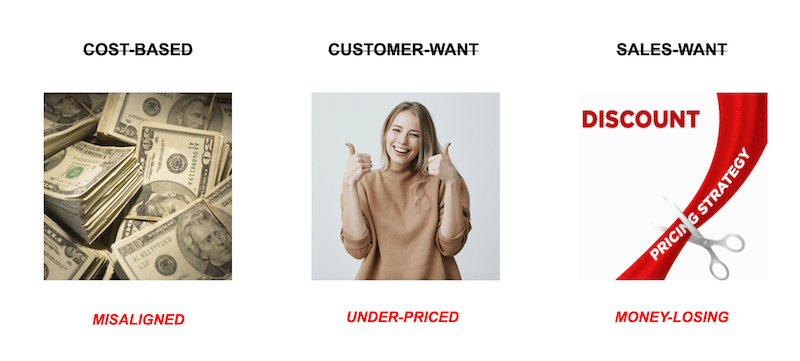
Cost-based
It’s still the most popular approach: you start with cost and assess your target profit. Unfortunately, you’ll often end up underpricing in environments where you could be higher and overpricing when you should be lower.
Customer-WANT
When pleasing your customer goes above everything else, you tend to over-deliver on expected value and under-cut price. Sales and marketing might push you into this paradigm. Just help them focus on increasing your customers’ willingness to pay for your products instead.
Sales-Want
It usually leads to aggressive discounting and loose policies. You might achieve short-term revenue objectives. But fundamentally, prices should only be lowered when your relative competitive value is no longer justified. Focus instead on product differentiation, value communication, and improved distribution to increase sales.
Strategic Pricing Principle #1: Value-Based pricing
Value is NOT whatever your target audience will pay for your product. It is created by the customers’ perception of how much benefit applies to them. To win, you need to gain a deep understanding of how products generate value for customers. A practical way to look at it is to reverse the traditional way companies go about pricing: instead of starting with the product, start with the customer!
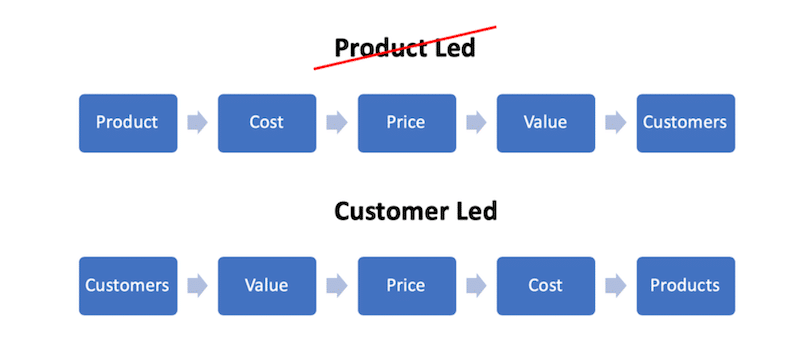
In pricing, the value that matters is your total value. It’s the combination of the Base and Unique (+ or -) Values:
The Base Value
Your customers have alternatives available. You need to identify your Next Best Competitive Alternative (NBCA). This will give you the base value. It is not necessarily a direct competitor and could be a different approach that customers identified to achieve a similar outcome (e.g., a washer-dryer machine vs. the dry-cleaning shop around the corner).
The UNIQUE Value
To calculate it, you need to assess both financial and emotional attributes. Financial is about cost savings, income improvements, and easily quantified. Emotional is more subtle and about the natural ways that create satisfaction. The unique value can be negative when customers are not as savvy as you’d wish on the actual benefits of your product.
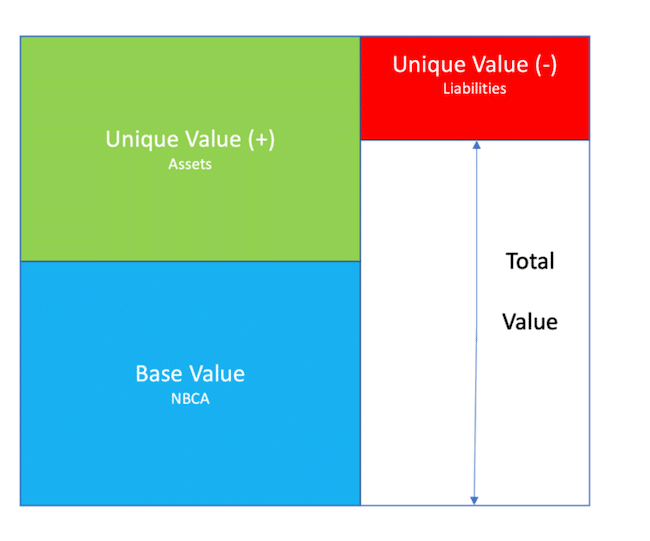
Strategic Pricing Principle #2: Price Structure
The price structure helps capture the best possible price for each customer segment. Some industries excel at optimizing it, like airline companies selling the very same airplane seat at different conditions depending on the customer profile. The difficulty is to create a segmented price structure that varies not only the price but also the offer or the qualifying criteria. A few tools can help:
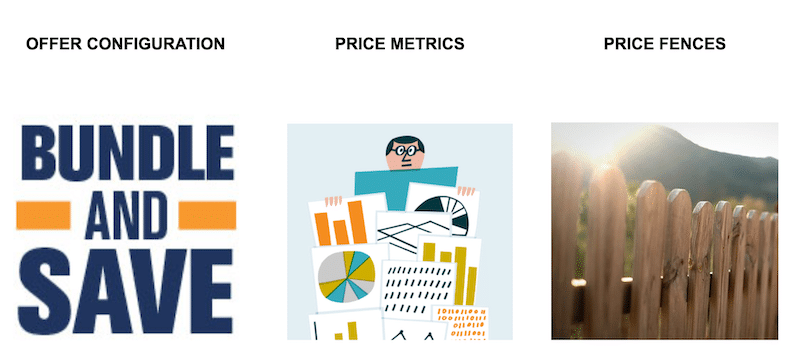
Offer configurations
Bundles are a powerful illustration if you combine elements that individually would have a lower level of price acceptance by segment. Sometimes, instead of lowering the price, bundling a free or low-cost service can do the trick. Typical examples include low-cost financing, payment terms, or anything that other customer segments would not value as much. Beware, though: unless delivering a service is trivial in comparison with the overall value of the offer, bundling optional services “free” will undermine profitability.
Metrics
Price metrics are another key enabler. They are the units to which pricing can be applied. It is critical to be able to grow from feature-based pricing to benefit-based pricing (e.g., software companies moving from price per server to price per Gb transferred). Different trackers exist that will help you determine the most profitable price metrics. We systematically study them in our strategic pricing makeover programs at The Product Sherpa.
Fences
Price fences are fixed criteria to meet to qualify for a lower price. Examples include theater discounts for seniors, students, or AAA cardholders. It is the simplest way to charge different prices to reflect different levels of value. But fences can create resentment and can be manipulated if not careful. Building proper identification mechanisms will go a long way.
Strategic Pricing Principle #3: Price Levels
When defining price levels, many of us try to find refuge in sophisticated methodologies like conjoint analysis and optimization models. Still, they rarely help reduce uncertainty about marginal cost and revenue. One helpful approach here is a lightweight methodology to determine your pricing window, coupled with managerial experience and judgment when setting prices and a few principles to keep in mind:
Alignment with your strategic objectives
If your company is aggressively looking into gaining share, it will dictate your pricing objective into penetration goals. There are really three options to consider: skim, penetration, or neutral. The key here is that prices should be established at the customer segment level to reflect value differences by customer segment and maximize profit.
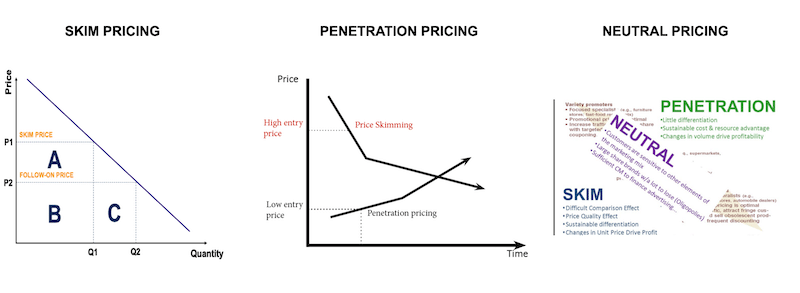
Incremental breakeven models
“How will sales change if I change my price?”
It’s an impossible question! Instead, identify your breakeven points through a simple “incremental breakeven analysis.” Combined with data and managerial judgment, it will likely be your best bet. It focuses on the change in sales volume required for a price change to improve profitability.
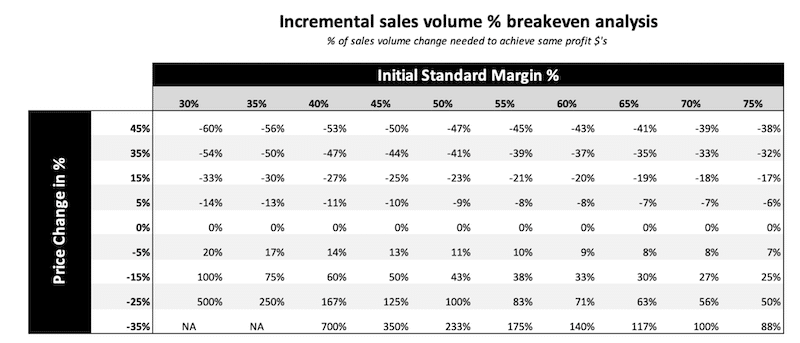
Drivers of price sensitivity
Thoughtful value communication will greatly influence price sensitivity, but you can also understand sensitivity by evaluating customer response. Different approaches exist to test customer response:
- Price experimentation is useful when the cost of implementation is low, and samples are representative of a broader audience. The online environment is ideal for these.
- Purchase Intention Surveys are reliable alternatives when comparing differences in responses at different price points and adjusting for historical biases.
- Other methodologies can help, but simulations (while more time and resource-intensive) tend to be the best when combined with an appropriate decision framework.
In Conclusion
We just scratched the surface. Value communication and proper pricing policies will also enhance your strategic pricing. There are also essential nuances on pricing over your product’s lifecycle and how you should manage conflict with competition thoughtfully. But what we just covered is a foundation for you to get it right.
I’m also genuinely interested in getting your feedback on this topic! How successful have you been in setting up your own strategic pricing? Which other considerations worked for you? Just comment on this blog or drop me a note on The Product Sherpa site!
If you want to go farther or have questions about strategic pricing and how it applies it to your Company, The Product Sherpa is here to help. Contact us, or schedule a free exploratory call. We have a set of simple questions that will get you started.. and thinking!
